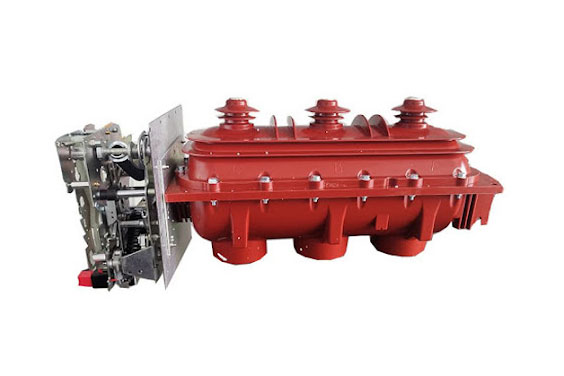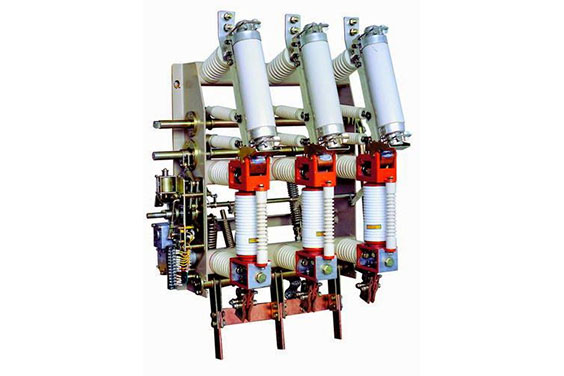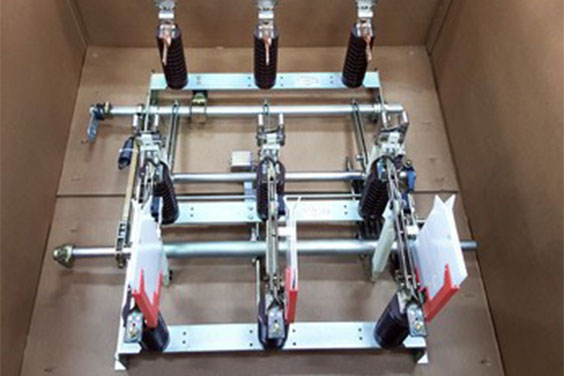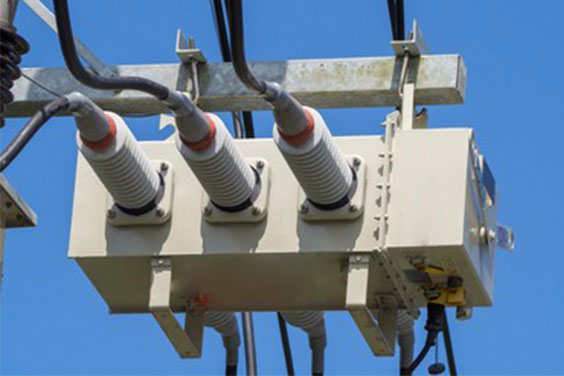As much as electrical equipment is important in ensuring that industries, homes, and workplaces have power supply, so also is disconnecting them in cases of bad load currents. When this happens, an immediate action must be taken to avoid uncontrollable damage, which is why installing switchgear components with your electrical equipment is very important.
There are various types of switchgear components. Some of them are the load break switch, disconnector, switch disconnector, and circuit breaker. These components act as regulators of current in electrical equipment, thereby ensuring a smooth flow of operation.
Amongst these components, the load break switch stands out because it regulates all kinds of currents (normal and short-circuit). So, in this article, we will be dishing out a complete guide on load break switch. Everything you need to know about this component will be discussed here.
What is a Load Break Switch
A load break switch (lbs) is a device that ensures the on-load making, breaking, and safety disconnection of low-voltage electrical circuits. This is done by adding equipment that enhances the disconnect switch blade’s operating speed, as well as equipment that changes arcing phenomena and allows for the safe stoppage of arcs that occur when switching load currents. Examples of these equipment are arcing horns, spring actuators, and whips.
An LBS load break switch could be manual, automated, or have a trip function. According to load break switch manufacturers, assembling a load break switch is quite easy and the usage is not hard. It is very necessary in the industrial sector, emergency switching, public distribution, motor feeders, and distribution panels.
A load break switch must possess the following capabilities:
- Must be able to interrupt current equivalent to the continuous current rating in the system voltage.
- Must be able to provide sufficient insulation to isolate the circuit when it’s closed.
- Must be able to interrupt small capacitive and inductive current, which is necessary for removing unloaded overhead lines, cables, transformers, and other electrical equipment.
- Must be able to carry the maximum fault current till the interrupting device clears the fault.l
What is a Non-load Break Switch
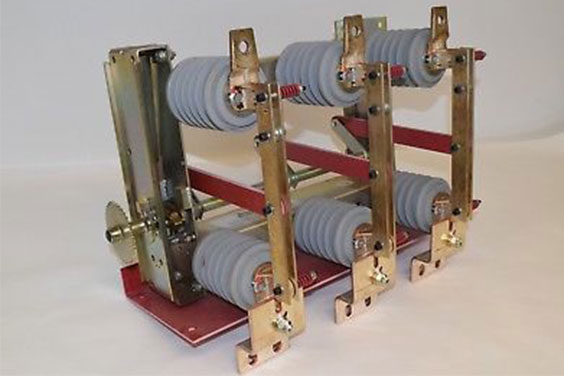
A non-load break switch is an “offload device,” i.e., it can only be operated when the current running through is zero. It’s usually turned off when electrical equipment needs to be inspected, serviced, or replaced. This is done to isolate the equipment from the current flowing in the circuit. It can be done to the whole system or just the part that needs to be worked on.
A non-load break switch is exactly the opposite of the load break switch. It is not designed to disconnect a circuit that is under load i.e., a circuit that has current running through it. To disconnect the circuit, you will need to use another tool. Using a tool will save you from the hazards that could be caused from turning off the switch. Turning off the switch without using a tool can cause an arc flash, which could in turn result in a fire outbreak, damage to properties, or even injure you.
There are several types of non-load break switches. They include:
- A connector that is attached to a solar module, such as an MC connector.
- A finger-safe fuse holder. A good example is those used in a combiner box.
- An isolating device that must be turned off with a tool.
Load Break Switch Working Principle
How does a Load Break Switch Work? A load break switch works in an easy and relatable way. The load break switch alters the current by mechanically moving its contact at a proper speed to “make” or “break” the current. “Make” means to close the current, while “break” means to open the current. During switching, it is subjected to mechanical, thermal, and dielectric stresses.
As a result, the load break switch must undergo numerous test duties in accordance with the IEC 62271-103 in order to investigate and thoroughly explore its interrupting capabilities. The current levels and the Transient Recovery Voltage (TRV) are the most important characteristics to examine when analyzing the behavior of the load break switch during breaking tests.
Advantages of a Load Break Switch
- Cheap: Considering the load break switch price, it’s a very affordable option and relatively the go-to for anyone prioritizing cost-effectiveness when choosing a switch. It is much cheaper than a double pole switch (a switch that is connected to two separate electric circuits).
- Safer: The safety advantage of a load break switch is premium. You can easily make (open) and break (close) the circuit without the fear of being in danger. You can operate the load break switch from a safe distance while remaining outside the arc-flash boundary.
A load break switch has a switching device that assists in grounding any charges that may remain after the switch has been turned off. Also, with the switching device, you will safely close against short-circuit currents, while protecting yourself and the switchgear from inadvertent operation.
- Protection provided for transformer: A load break switch has HRC fuses that act as protective agents for faults in a voltage transformer. The HRC fuses prevent any damage that could be caused by the stresses generated by power supply, stresses due to the load, or internal faults.
- Very easy to switch ON & OFF the supply: A load break switch is very easy to operate. You can easily switch ON and OFF the supply. Unlike the non-load break switch, you don’t need any tool to operate the switch’s ON and OFF function. A load break switch comes with a spring mechanism for turning the supply ON and OFF. A load break switch is shock proof and it consumes less power.
Load Break Switch Function
- Make and break currents: A load break switch has an arc extinguishing ability that is used to make (open) and break (close) currents in a circuit. This helps to ensure a smooth flow of electrical equipment operation.
- Prevention of damages: A load break switch as a switchgear component, make sure that damages that could occur due to irregular current in the circuit are prevented. A load break switch acts as an inspector and stops irregular current that could damage the circuit.
- Short circuit current: This is a function that other types of switchgear components fail to perform. A load break switch can make (open) specified currents in short circuits.
- Energize and de-energize a circuit: A load break switch is used to energize and de-energize a circuit with a small amount of magnetic or capacitive current. Examples are transformer exciting currents and line charging currents.
- Protection of lives and properties: A load break switch has an overall function of preventing damages due to electrical factors from getting close to lives and properties. It prevents any electrical hazard that could be caused from imbalanced current flow, under-voltage or over-voltage. A load break switch eliminates the risk of a fire outbreak or worse, thereby guaranteeing the safety of lives and properties.
What is the Load Break Switch Symbol
As previously said, there are four major types of switchgear components – load break switch, disconnector, switch disconnector, and circuit breaker. Each of these components have their symbols, indicating their function. Below is a diagram of each of their symbols.
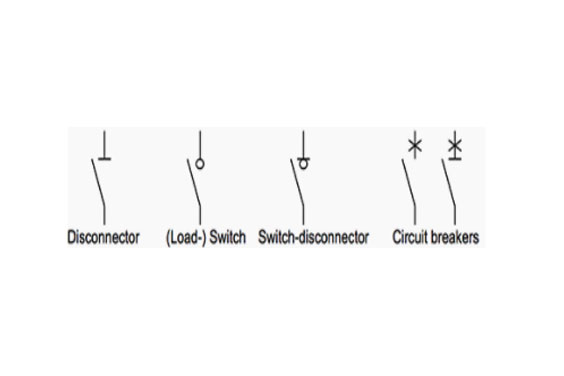
Looking at the diagram above, you will notice that each of them have a horizontal line attached to their symbol, except for the load break switch. The horizontal line is an indication of their isolating function ability i.e., the three switchgear components (disconnectors, switch disconnectors, and circuit breakers) are non-load break switches; they perform the isolating function.
What are the Types of Load Break Switches
Vacuum load break switch
A vacuum load break switch is a device that when activated, can interrupt electrical current. This is a type of load break switch that can be closed manually with a switch handle or automatically with an electrical signal.
It features remote closure devices and equipped automatic devices that can shutoff and protect electrical equipment when they are tripped. It has a long electric life, high relative price, and it’s suited for devices with a voltage of 220 kV or less.
This load break switch comes with shunt trip devices and optional undervoltage solutions that make sure that your electrical equipment benefits from their higher level of protection. Vacuum load break switches are suitable for a wide range of circuits and provide a short circuit interruption or voltage interruption that is not above the rated maximum. They serve as a normal load break switch and assist you in keeping your electrical systems in good working order.
Because the system functions within a vacuum line, there are additional safeguards and upgrades in place to avoid short-circuits or voltage difficulties from disrupting the system.
When a vacuum load break switch detects an electrical current or a malfunction, it will trip. Once it happens, a thorough inspection should be performed. Before reconnecting the device, all of the components must be checked thoroughly for damages or breakages.
SF6 load break switch
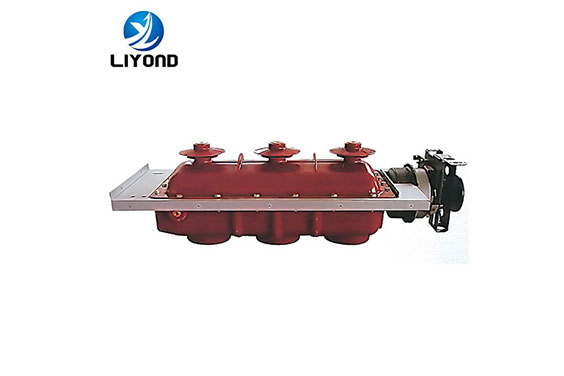
This is a medium voltage switchgear switch that uses SF6 gas as an arc extinguishing and insulating medium. In the switch, there are three functioning positions: open, closed, and earth. The switch’s small size, ease of installation, and excellent environmental adaptability make it appropriate for a wide range of applications.
The arc is extinguished with SF6 gas, which has a high breaking current and good breaking capacitor current performance, but the structure is more intricate, making it ideal for devices with a voltage of 35 kV and above.
The SF6 load break switch is noted for its good safety performance, high security and reliability, small size, maintenance-free, lightweight, and safety of operation. The housing of the load break switch has an internal structure weak point, so in the event of internal arcing, it will rapidly open, then the cabinet above the shutter release arc red open air overpressure steam-oriented outside the cabinet will follow. This makes sure that the switch cabinet security checks.
Air load break switch
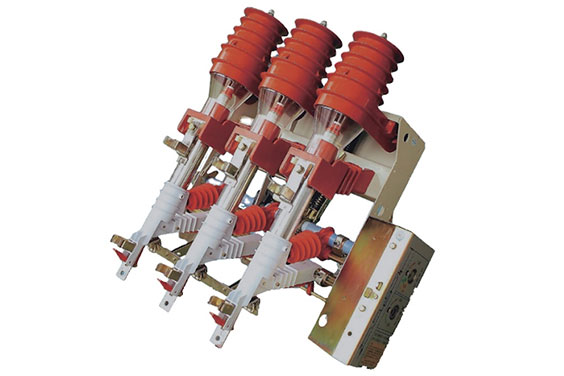
This is a type of load break switch that uses air as a dielectric and arc extinguishing medium. It can alternatively be defined as a switchgear device that uses air as an interruption medium. An air break switch’s contact opens in the air, and compressed air is used to remedy the arcing problem that occurs when the switch is opened. The major components of this load break switch are an arc extinguisher, a reservoir with a supply of compressed air, and an electro-pneumatic actuator.
An air load break switch is usually used to open the circuit under load. The arc that is created when the switch is opened is extinguished in a variety of methods. It can be quenched by moving the contacts away from each other or by interrupting the supply. The arc is quenched by lengthening the arcing horns in the switch construction These arcing horns are nothing more than metal parts that make up the arc.
The arcs tend to travel away from each other when the switch is turned on, finally breaking free. Compressed air is able to break a big current in the arc, but its structure is more complex, making it ideal for goods with voltages of 60 kV and more.
Medium voltage load break switch
This is a type of load break switch that can handle voltages ranging from 3 kV to 36 kV. It is available in a variety of styles, like metal-enclosed outdoor, metal-enclosed indoor, and outdoor without metal enclosure. This load break switch’s mode of interruption can be S.F., oil, or vacuum.
The major function of this load break switch is to interrupt current whenever there is a fault, regardless of the type of MV circuit breaker used by the medium voltage load break switch.
Amongst the medium voltage switchgear manufacturers, Elecspare is identified as a professional and reliable source for medium voltage load break circuits. The switchgear component ensures constant safety, electrical stability, electrical equipment durability, and requires minimal maintenance, which assists in eliminating environmental damage.
High voltage load break switch
The high voltage load break switch is divided into further types. They are:
- Solid gas producing high pressure load break switch: It uses the energy derived from breaking the arc. It causes the arc chamber’s gas-producing material to produce gas in order to blow out the arc. It has a simple structure and it’s suited for devices with a voltage of 35 kV or less.
- High pressure air pressure load switch: During the breaking phase, the air pressure of the piston blows out the arc. It also has a basic structure, making it ideal for devices with a voltage of 35 kV or less.
- Compressed air type high pressure load switch: The larger current is cut off by blowing out the arc using compressed air. The structure is relatively complex, and it’s suited for devices with a voltage of 60 kV or higher.
- Oil immersed load break switch: It uses the arc’s energy to breakdown and gasify the oil surrounding the arc and cool it down. It has a simple structure, but it is heavy; it’s appropriate for outdoor devices with a voltage of 35 kV or less.
Low voltage load break switch
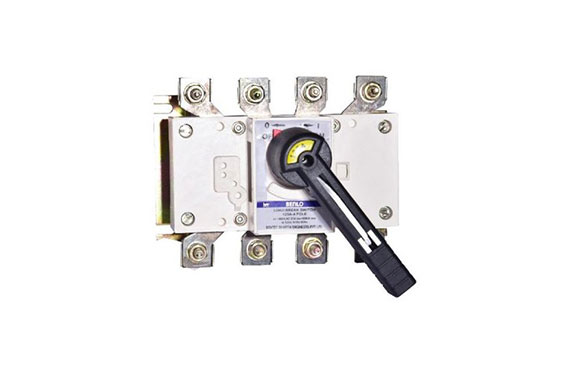
This is a type of load break switch that’s rated at 1 kV. It’s a composition of HRC fuses, low voltage circuit breakers, switches, offload electrical isolators, Miniature Circuit Breakers (MCB), earth leakage circuit breakers, and Molded Case Circuit Breakers (MCCB). It can be used in an AC power frequency circuit to manually or occasionally make and break the on-load circuit, as well as for line overload and protection of short circuits.
The contact knife completes the on-off circuit, while the fuse completes the overload and short-circuits protection. It has a basic structure and a dependable mechanical interlock component. Once the cover is opened, the switch cannot be closed, and when the switch is closed, the cover cannot be opened, thereby making sure that there is safe operation.
What is Load on a Switch
Load is generally referred to as the power draw, or the electrical demand that a device places on a circuit. Take the load on a lighting circuit for example; you can compute the “total load,” or the maximum wattage of all the light fixtures on the circuit.
Load on a switch is the amount of energy consumed by a switch. Load is marked on a Ground Fault Circuit Interrupting (GFCI) outlet because the outlet has a breaker that shuts down the current when a surge is detected. Interchanging the load wires on a standard outlet has no effect on the outlet, however, the breaker becomes ineffective if the same is done on a GFCI outlet. This makes the outlet unable to provide the protection it ought to provide, thereby creating a potentially dangerous situation.
Load Break Switch Specification
- Testing: These are the following tests performed on a load break switch to ensure optimal functionality.
- Routine test: This is a test that is performed from time to time. It is conducted to determine the make and break capacity of the load break switch. This test is done to know the peak of Transient Recovery Voltage (TRV) withstand capability after the occurrence of current interruption.
- Capacitive current switching test: When an unloaded transmission line, cable, or other equipment is suddenly opened, the interruption of capacitive currents creates high voltage spikes, putting stress on the switching device’s insulating medium.
- So, when a load break switch interrupts line charging capacitive current, a line charging current test duty will be performed to evaluate its interrupting capabilities, and cable charging current test will be performed to evaluate the breaking of cable charging current capability.
- Closed loop switching test: Closed loop breaking capacity is when a circuit in which both sides of the switch remain energized after breaking. To evaluate this capacity, a closed loop switching test must be conducted.
- Short-circuit test: Sometimes, the load break switch will close on an existing fault. During the transitory time following the commencement of current during a making operation, the optimum peak of the first major current loop of the current in a pole of a switch will be observed. The load break switch must be able to close without hesitation as soon as the contacts touch, and it must be able to endure the tremendous mechanical forces involved.
- Short-circuit test must be performed on a switch that has undergone at least 10 make-break operating cycles at 100% predominantly active load.
- Inspection: This is the periodic check of load break switches. This action notifies for servicing, maintenance, and repair when needed.
Load Break Switch VS Circuit Breaker
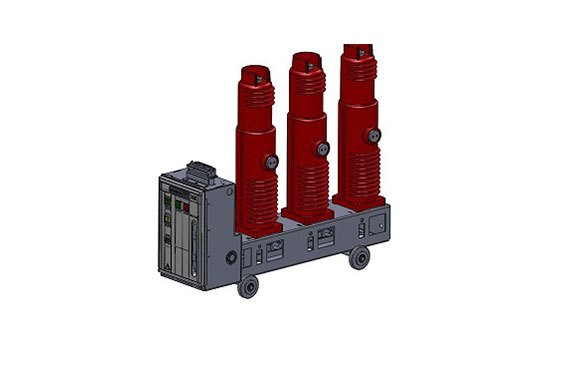
A load break switch and a circuit breaker are different. The difference between a load break switch and a circuit breaker is significant, meaning they shouldn’t be mistaken for the same thing, nor should one of them be used in place of another.
There are two major parameters for the connection and disconnection of power in electrical installations. They are:
- Making capacity: It’s the optimal load current at the start.
- Breaking capacity: It’s the optimal fault current that can be interrupted.
A load break switch can make and break load currents, but cannot do the same for fault currents. A circuit breaker, on the other hand can do both i.e., make and break both load currents and fault currents.
Load Break Switch
A load break switch controls the flow of electrical current in a circuit. It can be used to either stop or start the flow of the current. It performs the operation of manually cutting or reconnecting power from an electrical source by initiating or closing an air insulation gap between two conduction points.
Circuit Breaker
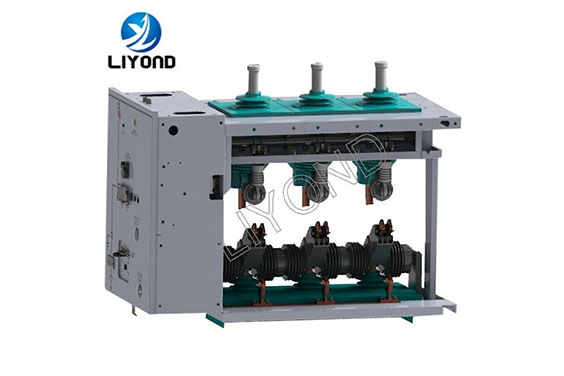
Circuit breakers have been existing for a long time. It was first developed by Thomas Edison in the year 1879.
When the current running through an electrical circuit exceeds its intended limits, a circuit breaker is used to protect motors and wiring. When a hazardous condition occurs, it does so by withdrawing the current from the circuit. A circuit breaker, unlike a switch, does this automatically and cuts off the electricity immediately.
A load break switch is used to turn power on and off; a fault state cannot be detected and interrupted by a switch. It would most likely melt or catch fire. But a circuit breaker “breaks” the circuit in the event of failure.
Load break switches are made to perform a large number of operations; it can be turned on and off severally. On the other hand, a breaker will eventually fail if it is repeatedly turned on and off.
Conclusion
A load break switch is a protective device used in electrical installation to make and break load currents. It ensures that electrical equipment functions smoothly. It is very cheap, safe, acts as protection for transformers, and very easy to switch on and off.
A load break switch is very important in an electrical system, not just for industries, but also for domestic applications. Circuit breakers as well are important as they regulate load fault. Elecspare, as a top-rated company amongst the high voltage circuit breaker and load break switch manufacturers makes quality switchgear components that can be trusted to guide against load current and load fault issues in your electrical system.

